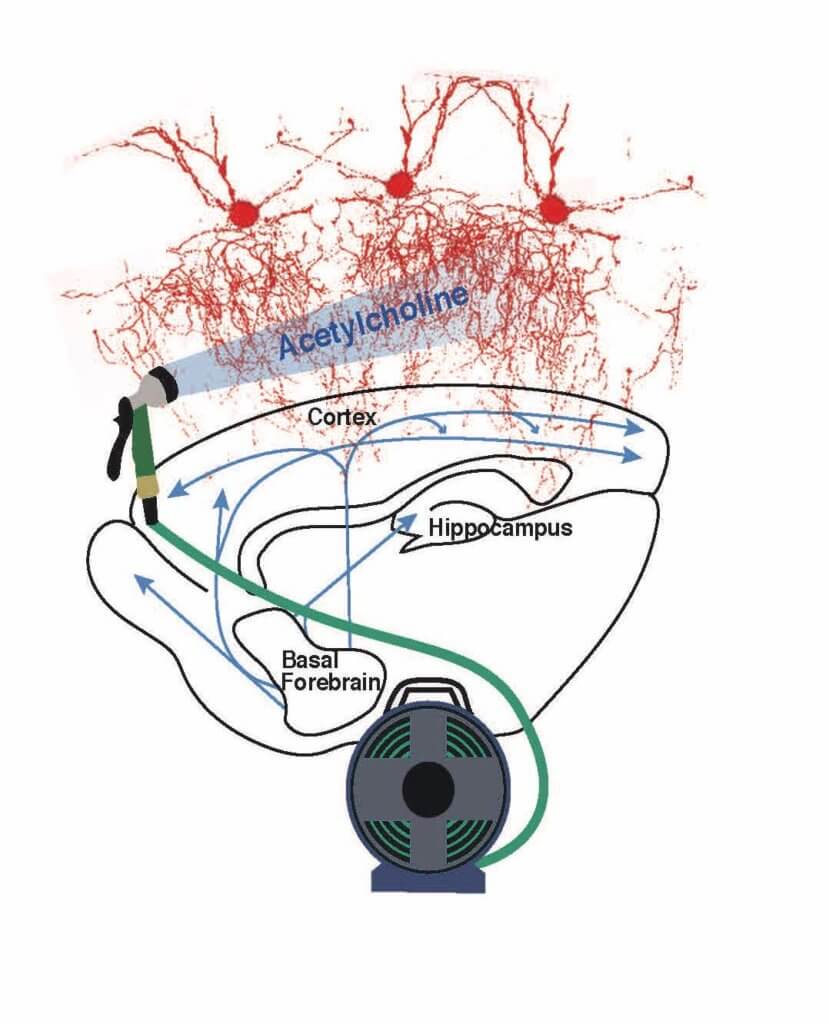Can early life events affect the formation of circuitry in the brain that emerges as disease later in life? A new study of brain development in mice shortly after birth may provide answers, report scientists at The Ohio State University College of Medicine.
Researchers focused on two types of brain cells linked to neurological disorders in adults. One type of neuron forms a modulating system deep in the brain. The other type of neuron, in the cortex, counteracts excitation in other cells with inhibitory effects. The modulating cells send connections to the cortex, to remotely influence cortical cell activity.
“It’s known that abnormal early-life experiences can impact kids’ future sensation and behavior. This finding may help explain the mechanism,” says Hiroki Taniguchi, associate professor of pathology at the university, in a statement.
A chemical released from the modulating cells starts formation axons, long extensions of nerves, in a process called arborization. The axons transmit messages to the cortical cells. The degree of arborization determines how effectively the cells in the cortex function.
“This study provides new insight into brain development and brain pathology. It’s possible that during development, depending on animals’ experiences, this modulating system activity can be changed and, accordingly, the cortical circuit wiring can be changed,” explains Taniguchi.

The study involved chandelier cells, a type of inhibitory neuron in the cerebral cortex, and neurons of the cholinergic system, which monitor the environment and the internal state of the organism. They send signals to trigger memory and appropriate behaviors.
Chandelier cells are named for the spray of signal-transmitting synapses (called synaptic cartridges) at the branch terminals that resemble candles of a traditional chandelier. The pattern gives them inhibitory control over hundreds of cells at a time.
“These cells have output control,” explains Andre Steinecke, first author of the study. “Chandelier cells can put a brake on excitatory cells and tell them they’re not ready to fire. As inhibitory cells, chandelier cells are thought to regulate waves of firing – which is important, because the waves contain information that is transmitted over long distances of the brain.”
Previous post-mortem studies show that the synaptic terminals located at the end of chandelier cell axons appear to be reduced in the brains of patients with schizophrenia.
“This axonal ‘arbor’ being reduced suggests they don’t make as many connections to downstream targets, and the connections themselves are also altered and don’t work that well,” Steinecke says.
The team used two techniques to observe chandelier cells during early-life brain development in mice. They used a dye to label and detect cells that differentiate into chandelier cells, and transplanted genetically manipulated cells back into the mice shortly after birth.
The researchers first observed how chandelier cell axons develop their branching structures. Small protrusions emerging from axons were the first signs that branches would sprout. They also identified the chemical that starts the sprouting process as the neurotransmitter acetylcholine.
“The key is that we didn’t previously know how neuromodulator systems regulate the cortical circuits and have been implicated in brain diseases,” Taniguchi adds. “Now that we’ve found that cholinergic neurons could remotely impact cortical circuit development, especially cortical inhibitory signals, the question is what kind of environment or emotional state of change can impact cortical inhibitors’ development? We may want to see if we can find a link as a next step.”
The study is published in the journal Science Advances.









-392x250.jpg)


